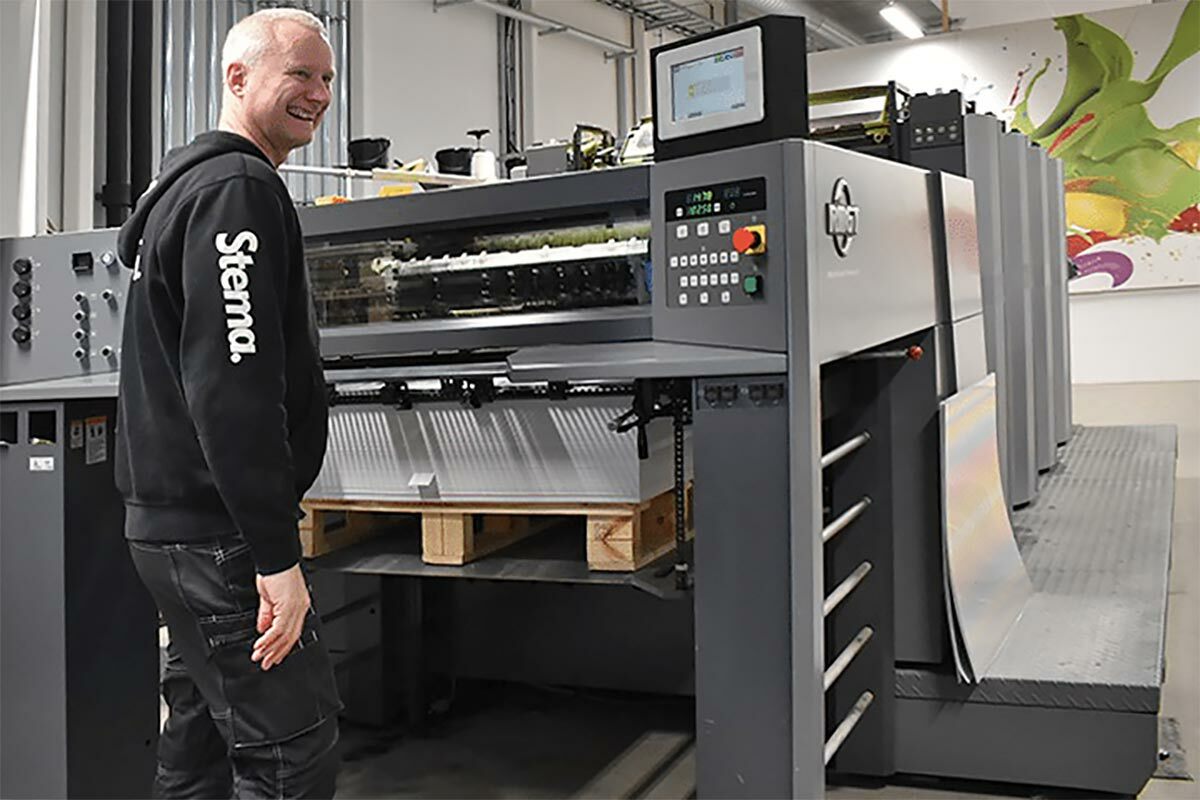
Printing company Stema Specialtryck selected ECO3's Apogee software to streamline all of its prepress production through one workflow
Stema (Borås, Sweden) moved into new premises just over two years ago when the merger of Responstryck and Stema became a reality. The twelve people in the prepress departments have so far worked with different workflows and software for creating impositions, depending on department. Some for screen, others for offset, wide-format and digital printing. Print orders are completed; layouts, pages and PDFs are customized and optimized before being submitted for printing.
For the past four years, Stemas prepress staff have used Agfa’s Asanti workflow for the prepress in their large-format division. The experience has been good and they decided to implement the software throughout all departments so that everyone in the company can work with the same prepress workflow for all types of print.
We are now investing in ECO3’s Apogee for the entire printing facility. The biggest win will be a higher flexibility for all staff working within prepress,” says , who has been driving the project and saw that they could make additional time savings.The biggest win will be a higher flexibility for all staff working within prepress.
Jens Gustafsson, Sales Manager, Stema
Different types of machines for printing
The wide fleet of machines with different printing techniques is another important reason for the investment.“Screen printing combined with other printing techniques makes us quite unique. With everything under the same roof, color management becomes an important element.

"Although we may not be able to perform full color management for all output devices, we still know which problems may arise. Some files will not be fully color-controlled in Apogee, but it is still really helpful to know that all jobs will go through the same system and be processed in the same way. And then you still have the ICC profiling in the machines,” he says and continues: “The most important thing is that we will work with one single system to handle a production environment with many different types and brands of pre. We have a dedicated group in our prepress that drives this forward, so we can get the most out of the software.”Stema starts on version 11 of Apogee. According to the contract, version 12 will become available later during the year. The software can either be cloud-based or installed on site. “We have been recommended to have a server on site in our case. The cloud has its merits, but we work with these extremely big and heavy files.”
Fixing ready-made PDFs
“Stema will mainly use Apogee for traditional impositioning. When the layout is done we need to verify that, for example a brochure, is imposed correctly so that the pages end up as planned.We work a lot on optimizing impositions within our flows, reducing the time people use to create impositions. The customer may want five different posters of a size in mixed editions. But then maybe another number of posters with the same layout should be made in different sizes. It can be a bit difficult to manually get to such a layout optimally, and there we will use the software to control the PDFs to be printed.”Jens Gustafsson says that it is also about the job being imposed in a smarter way: optimizing the printing surface on the sheets to save material and producing as efficiently as possible. Stema also invests in web-to-print for its customers. Coupled with Apogee, this also saves time for customers when ordering, confirming and imposing to print.Stema also chooses to use a software solution for ordering to save time. “We will have a preflight functionality for all our sales staff and CRS. In this way, we will save time by being able to control the print-ready PDFs that we receive from customers at an earlier stage. You don't have to ask the prepress staff: Are the images good enough? How big is this file? Is it correct? Which device is printing it? And so on.”
The preflight functionality will save us time as it enables us to control the print-ready PDFs that we receive from customers at an earlier stage.
The contract to use ECO3's solution extends over a 12-month period and the company has opted for a monthly payment scheme. Price has not been a decisive factor in choosing the software.“We have weighted Apogee against Prinergy and Pandora from Kodak. What we see growing is large-format, and as we already are familiar with Agfa’s Asanti, the move to the full Apogee solution is not such a big change. When it comes to service and support, we also feel a greater sense of security through ECO3’s local presence.
In hindsight, Jens Gustafsson says that it would probably have been cheaper financially to continue like before in the short run, but that the positive effects of Apogee will probably be clear in the long run.“At first, I thought we could make a small cost savings on this project. But it turns out instead that we will spend a few hundred euros more per month. But I am absolutely convinced that the increase in skills and the extended use of flows will make the investment pay off”, says Jens Gustafsson.
Stema's choice of prepress solution
Stema Specialtryck starts on version 11 of ECO3’s Apogee. The contract stipulates that version 12 will become available later this year. By opting for Apogee Prepress, they get the opportunity to prepare and manage jobs for the entire production (large-format, offset, digital and screen printing) from one user interface. Also included in the deal are options that allow Stema to integrate the software with its own systems via XML.
Source: https://signprint.se/2020/04/03/tajtare-prepress-efter-sammanslagning/ Written and photographed by Claes Nordström